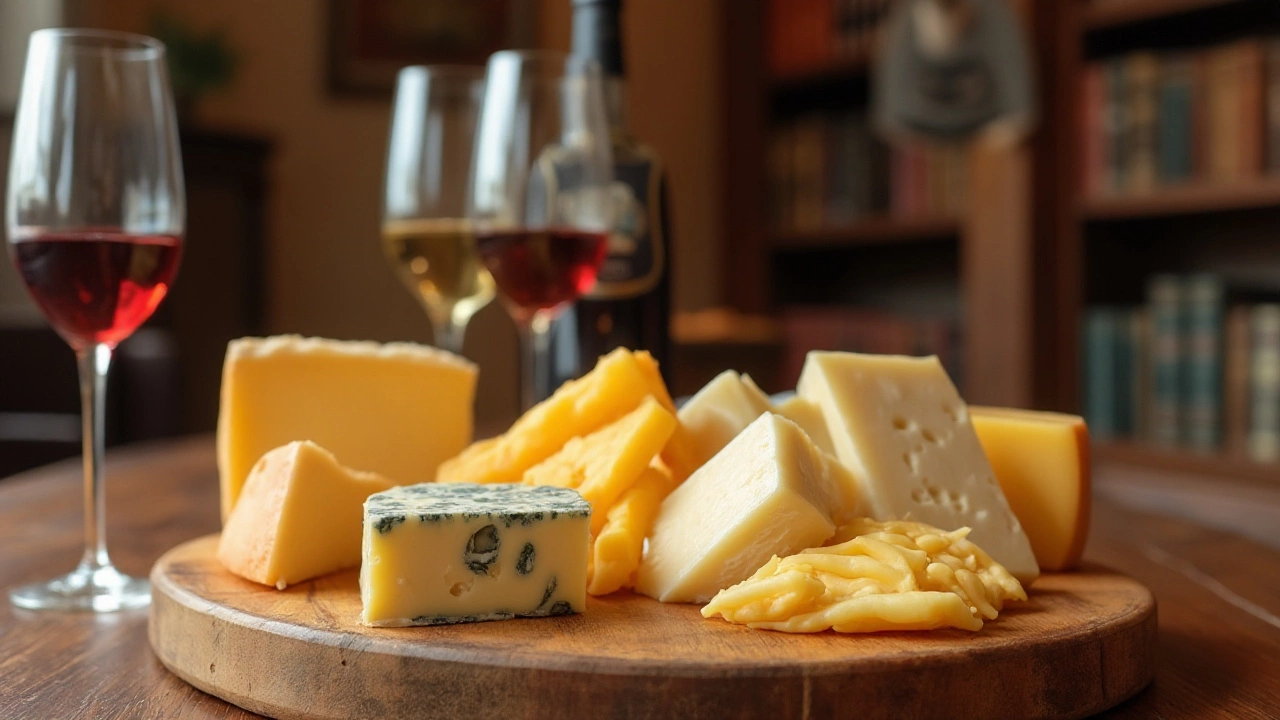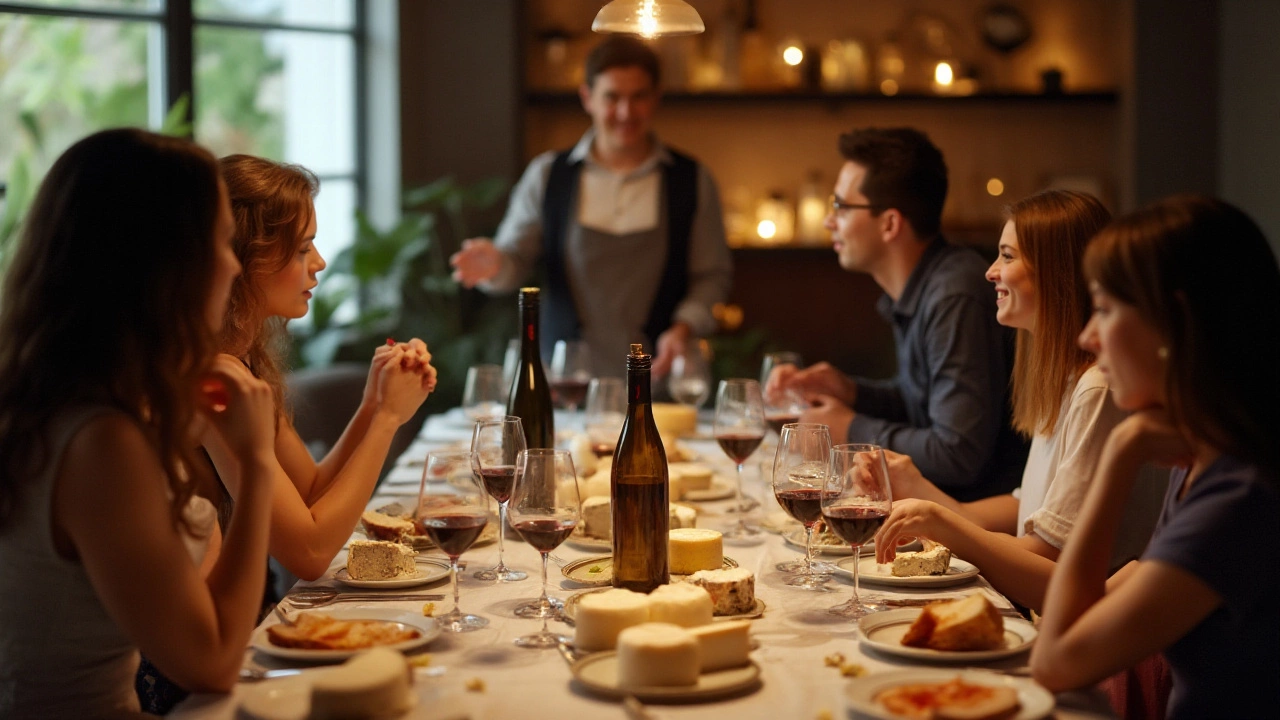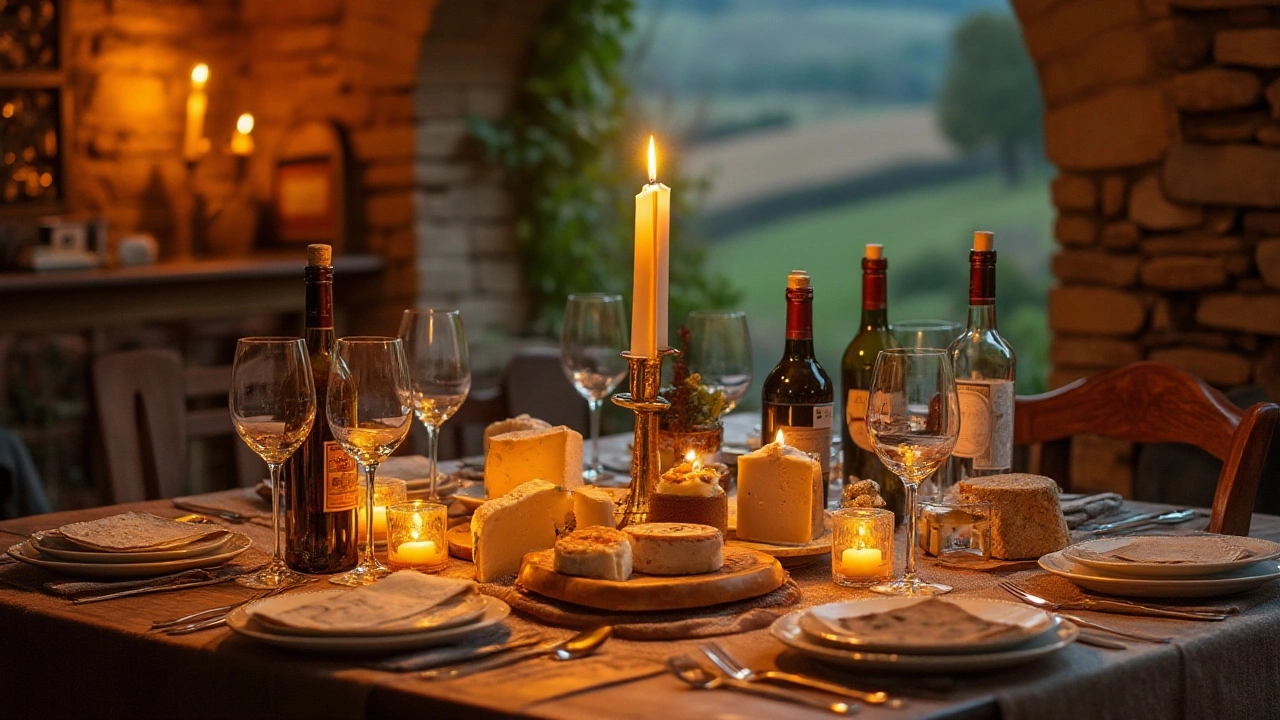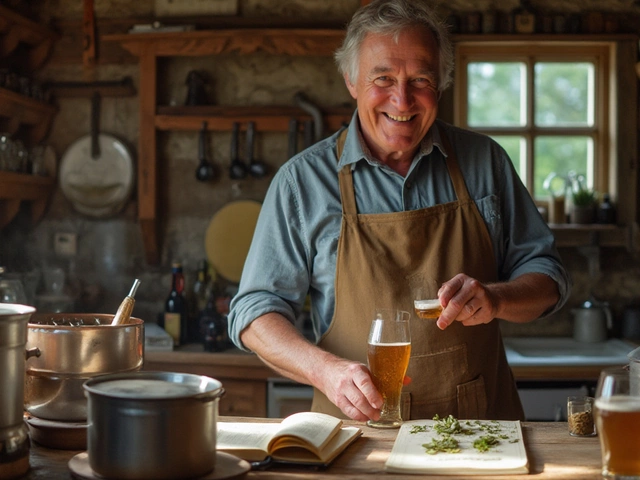The age-old tradition of pairing wine with cheese has delighted palates for centuries. It's not just a matter of taste but a harmonious blend of flavors that resonate together. The practice combines the art and science of gastronomy, balancing acidity, sweetness, texture, and aroma.
Understanding why cheese is served with wine delves into historical contexts and scientific explanations. It’s more than the simple act of serving cheese; it's about creating a culinary symphony that enhances social gatherings and highlights the prowess of producers behind each product.
This journey uncovers the roots of this delight, the reasons it captivates taste buds, and provides guidance on how to ensure each bite and sip is a delicious memory.
Historical Background
The delightful duo of wine pairing and cheese has roots entrenched deep in history, weaving together tales of pastoral livelihoods and ancient dining practices. Initially, this combination was born out of necessity, as both products were staples in rural communities where agriculture and viticulture naturally coexisted. Winemakers and cheesemakers often found themselves in close proximity, fostering a culture of sharing and culinary innovation. In regions like France and Italy, renowned for their rich gastronomic heritage, the evolution of cheese and wine pairing became an art form. It transcended mere survival to become an emblem of regional pride and cultural identity.
Before globalization made a banquet of choices available at every corner of the world, locals relied heavily on what was regionally available and seasonally fresh. This meant that pairings were often dictated not only by taste but by what was accessible. The Loire Valley, with its grassy pastures and lush vineyards, epitomized this agrarian symbiosis, bringing to the table pairings like goat cheese with Sauvignon Blanc. These traditions proved that locality could indeed shape preferences, etching them into the culture. As centuries passed, these combinations were refined and celebrated, paving the way for wine and cheese to be revered on the culinary stage. The pairing brings together the robust history of fermented foods and the ever-evolving nature of taste, laying the groundwork for today's aficionados.
"Wine and cheese are ageless companions, like aspiring and perspiring, they blow strong and light, they last long and gone." - M.F.K. Fisher
The dawn of the Middle Ages brought about a more structured approach to wine and cheese. Monasteries across Europe took on complex roles in this process, honing techniques in both cheese and wine production. The religious institutions became bastions of culinary craft, safeguarding recipes and processes under their roofs. These endeavors were not purely pious pursuits but also played key economic roles, ensuring livelihoods and supporting local prosperity. During these times, documentation and careful records began to surface. Historical annals from abbeys reveal records of planting vineyards alongside directions for making cheese, underscoring their innate connections. As trade expanded, monasteries became central hubs, disseminating their knowledge and products far beyond their walls, inadvertently setting the stage for the modern gourmet scene.

Flavor Chemistry
When it comes to the art of pairing cheese with wine, every aspect of the experience can be decoded by understanding the chemistry of flavors. This is where the magic truly happens, with the molecular interactions harmonizing flavors in unexpected yet delightful ways. The cheese’s fats interact with the wine’s tannins, creating a balance that soothes the palate. This interaction is not merely a coincidence but a beautiful symphony orchestrated by the properties of these foods.
Wines possess a variety of acids, like tartaric and malic acids, which react compellingly with the various textures and flavors of cheese. Cheese often carries lactic acid, which can soften the acidity of the wine, resulting in a creamier flavor profile. The salt content in cheese also plays a critical role, not merely as a preservative but as a flavor enhancer, accentuating the sweetness of wines and creating a depth of complexity with each sip and bite. According to a study by sensory scientist Dr. Hildegarde Heymann, "The key is balance. Cheese fat neutralizes wine’s tannins, smoothing the harsh edges."
The texture, too, plays an undeniable role. Creamy, rich cheeses like Brie can coat a wine's more acidic structure, enhancing its smoothness. On the other hand, aged cheeses, with their nutty, robust flavors, work exceptionally well with wines that boast a greater depth of tannins and acidity. The interaction not only affects taste but also affects mouthfeel significantly. This chemistry of altering sensations is part of what makes pairing cheese with wine such a rewarding experience.
The element of sweetness and umami further adds to the complexity. A sharp cheddar or an aged Gouda can present umami flavors that resonate with wines carrying fruity or rich profiles. Sweet wines like Sauternes can play off a moldy blue cheese's intense saltiness, creating an electric contrast that delights the senses. It's a chemistry akin to a well-tuned orchestra — each element serving a distinct purpose and enhancing the ensemble as a whole.
To maximize this wine pairing experience, understanding personal taste preferences can be a valuable tool. It is about embracing both harmony and contrast. The wine's characteristics — be it boldness or subtleness — should complement the cheese while possibly providing an exciting counterpoint. So next time when indulging in this classic pairing, remember the science behind it adds richness to the beauty of enjoying wine and cheese together.
| Wine Characteristic | Cheese Companion |
|---|---|
| High Tannins | Creamy Brie |
| Sweeter Wines | Blue Cheese |
| Acidic Wines | Goat Cheese |

Cultural Significance
Wine and cheese hold a deep cultural significance across the globe, entwined with traditions that date back centuries. In many regions, the combination of these two indulgences signifies hospitality and refinement. During the feudal era in Europe, wine and cheese were coveted by the nobility, served at lavish feasts and gatherings to symbolize prestige and good taste. The connection was so profound that entire communities developed around vineyards and dairies, each town taking pride in their unique pairing traditions. France, with its regions like Bordeaux for wine and Normandy for cheese, exemplifies how intertwined wine and cheese are within their cultural fabric.
This tradition extends beyond Europe, permeating global culture, touching the likes of the United States and Australia, who have adopted the pairing into their culinary repertoires. It’s not merely about indulgence; wine and cheese demonstrate an art of balance and appreciation. Public events and festivals dedicated to these delicacies demonstrate their role in cultural economies. According to a survey conducted by the Culinary Research Institute, it was found that pairing events have contributed around 20% to local tourism in certain wine-producing regions, illustrating their economic and cultural weight. In addition, each pairing showcases cultural identity and local traditions, allowing for a storytelling medium about the land, climate, and craftsmanship involved in creating these products.
The cultural significance also permeates domestic settings, where serving wine and cheese at gatherings is associated with community and connection. It's not uncommon for households to have their own set of pairing combinations handed down through generations, each telling a story of ancestry and taste heritage. Imagine a winter evening mapped out with boards of local cheeses paired meticulously with wines that capture the essence of the region. Such experiences are more than just gastronomic; they’re moments of cultural expression. As French culinary philosopher Jean Brillat-Savarin once noted, "A meal without cheese is like a beautiful woman with only one eye," highlighting the cultural gravitas these pairings exude during shared meals. The tradition transcends mere pleasure, acting as a bridge that connects time, people, and cultures.
"Wine and cheese pairing is akin to poetry, venerating both harmony and contrast, uniting diverse cultures under a shared love for culinary synthesis." — Culinary Historian Antonia Mattei

Pairing Tips
Creating an ideal wine and cheese pairing is similar to crafting a piece of art. The balance of flavors and textures plays a key role, and a deeper understanding of both the wine and the cheese will result in a much more pleasurable experience. One of the first factors to consider is the balance of flavor intensity. Mild cheeses work best with lighter wines as their subtle flavors can get lost with robust wines. Alternatively, stronger cheeses are best showcased alongside bolder wines that can match their intensity.
Matching flavors is another crucial step when delving into wine and cheese pairings. For instance, a creamy cheese like brie is complemented beautifully by a crisp Chardonnay due to its ability to cut through the richness. Meanwhile, a tangy goat cheese pairs well with a Sauvignon Blanc, enhancing the earthy, herbal notes refreshing your palate between bites. Alternatively, red wines often pair well with firm, aged cheeses such as cheddar, where the tannins in the wine can handle the cheese's robust flavors.
Don’t forget the role of texture in discovering your ideal pairing. A creamy, soft cheese matched with a wine that holds significant acidity or effervescence can be a delightful experience as the wine works effectively to cleanse the palate between each luscious bite. As you create these culinary pairings, remember that regional pairings, where the cheese and wine originate from the same area, often work wonderfully together because both evolve in environments that shape their complementary characteristics.
On another note, considering contrast can lead you to new heights of delectable synergy. Salty cheeses, such as blue cheese, translated deliciously with sweet dessert wines like Sauternes or Port, result in a perfect saltiness and sweetness dance on the taste buds. This balancing act can provide a memorable surprise for the senses.
There are tried-and-true guidelines to wine and cheese pairing, but don't hesitate to experiment outside of the standard selections. Sometimes, the most unexpected combinations reveal the greatest delights. Renowned sommelier Nossiter once said,
"Pairing wine and cheese is a mysterious joy where breaking the rules can reveal the most harmonious taste experiences."The process of trial and error can be as enjoyable and tasty as following traditional routes.
Consider the temperature of both your wine and cheese as well. Red wines benefit from a slight chill, while whites are generally served cold. Cheese reveals its best features closer to room temperature, so allowing time for cheese to rest before serving can unveil complexities that might otherwise remain hidden. It’s wise to serve wine in appropriate glassware that encourages aromas to concentrate and enhance sensory enjoyment. In the case of a tasting event, starting with milder and lighter options before progressing to more intense choices can ensure that your palate is primed and well-treated throughout the occasion.


